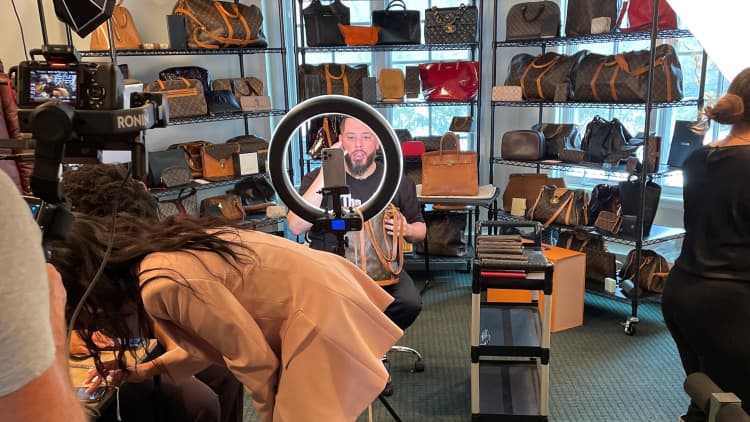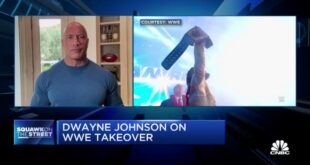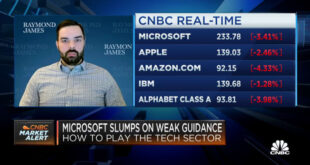
Last year, Anthony Velez, CEO of Bagriculture, a small business selling pre-owned designer handbags, made up to $100,000 a month across his seven brick-and-mortar stores in New York City.
This year, business is much different: Velez has closed all of his physical locations, but he’s generating up to $100,000 a day.
The secret to his success, he told CNBC, has been diving into the world of livestream shopping.
“All the metrics exceed any other form of shopping I’ve seen – period,” Velez said. “We can go live on three to four platforms simultaneously.”
The trend involves a seller broadcasting live video of themselves showing and explaining products while viewers ask questions and make purchases in real time. Livestream shopping started on social media in China, and according to Coresight Research, has grown into a $512 billion market.
That market size might explain why some major platforms are rushing to grab a piece of the action here in the U.S.
“Poshmark, eBay, TikTok. [I’ve gotten] nonstop phone calls,” Velez said. “TikTok flew in from China to meet with us.”
Anthony Velez, CEO of Bagriculture, a small business selling pre-owned designer handbags, live streams a shopping event.
Andrea Day | NBC
In its most recent quarterly report, Coresight Research, which tracks the livestreaming e-commerce industry globally, projected that U.S. livestream sales would reach $32 billion by the end of 2023. However, CEO Deborah Weinswig told CNBC the firm has since revised that projection.
The original estimate was set early this year, she said, and didn’t fully take into account South Korean internet giant Naver’s acquisition of Poshmark. At the time, TikTok Shops, a way for users to buy products within the app without having to go to a separate e-commerce store, was also still getting its footing.
Now, “we believe that livestreaming sales in the U.S. could easily reach $50 billion this year,” Weinswig said. The firm also estimates livestream shopping will account for more than 5% of total e-commerce sales in the U.S. by 2026.
TikTok, Poshmark and eBay all told CNBC they’re currently testing livestream shopping.
“We’re really bullish for the growth of this new way to shop,” said eBay’s chief product officer, Eddie Garcia. “The sky’s the limit … and we’re gonna keep learning. We’re going to keep investing.”
Garcia, who oversees eBay Live, the company’s livestreaming platform, said it is currently focused on fashion and collectibles, with plans to expand from there.
“We have 134 million buyers all around the globe who are chomping at the bit and really thrilled to engage with sellers in this new way,” Garcia said.
Meanwhile Velez said he’s still fine-tuning his deals with the platforms, which involves handing over some of his earnings. Right now, he pays between 13% and 20% of each sale to cover things like payment processing and promotions.
“We give a percentage our sale in exchange for visibility, ease of use,” he said.
Influencer Danielle Santana hosts live shopping shows on Amazon, selling products from other businesses — everything from cheese graters to make-up sponges. She said she gets a cut of every transaction.
Santana, who can sell 500 to 3,000 items in one show, told CNBC she made six figures just on Amazon Live last year.
“[My commission] ranges from 2% to upwards of 20% – and that all depends on the category and the items that you are selling,” she said.
Santana is one of hundreds broadcasting on the platform every day. A spokesperson for Amazon said in an email that “thousands of creators” livestreamed throughout the e-commerce site’s Prime Day event in July of last year.
And while some major platforms are jumping into livestreaming, one social media giant is pulling out.
A spokesperson for Facebook and Instagram parent Meta told CNBC by email the company made the “hard decision” to end support for its Live Shopping feature in March.
Previously, according to Instagram, businesses and creators were able to tag products when they went live on the platform, allowing viewers to buy or save products added to the shopping video.
“Businesses will still be able to use live broadcasting but the ability to tag products will be going away. This allows us to focus on experiences that provide more value for people and businesses like Reels and Ads that help with product discovery,” the company spokesperson said.
According to Coresight’s Weinswig, Meta is “missing out.”
“It could ultimately impact the number of eyeballs, which will impact the advertising dollars. They will also not benefit from the sales being concentrated on their platform,” Weinswig said. “Even the bigger miss for [Meta] will be the community, which will look elsewhere to shop and converse and learn from each other.”
Weinswig estimates that companies working to establish themselves with livestreaming could see upward of 25% top-line growth.
So, who is poised to emerge victorious in the livestreaming battle?
According to Weinswig, it’s TikTok, which has a significant opportunity in the U.S. market given its 150 million monthly active users and popularity with younger consumers.
The platform’s technological advantage over its competitors enables it to target users with products they may be interested in purchasing.
Weinswig also noted that TikTok has streamlined the shopping process for users, keeping livestreams and purchases all in-feed — without leaving the app.
 EU News Digest Latest News & Updates
EU News Digest Latest News & Updates



